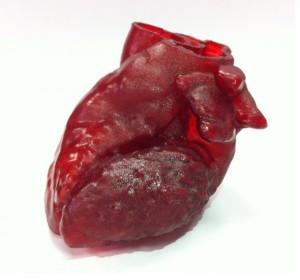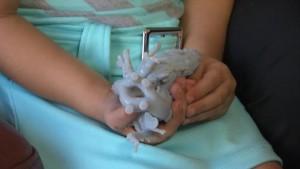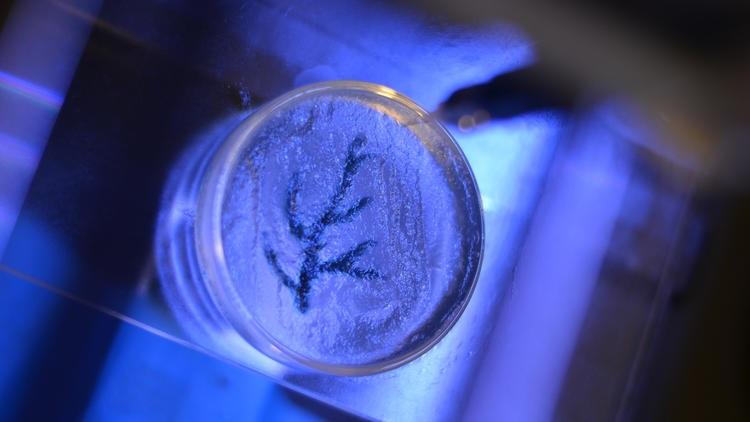 Life expectancy for the average American is at an all-time high right now. Currently, that’s around 79 years, but many, many people are living longer than that. The oldest person alive today is 116 years old, and in the not-so-far future, people who live to that age – or older – may be commonplace. Medical technology is advancing so rapidly that once-deadly conditions are becoming easily curable, and the advance doesn’t appear to be slowing down. 3D printing is, of course, a major part of the technology allowing doctors to fix the formerly unfixable. It’s actually feasible now that failing organs will be replaced by brand new 3D printed ones, and it may not be that far away.
Life expectancy for the average American is at an all-time high right now. Currently, that’s around 79 years, but many, many people are living longer than that. The oldest person alive today is 116 years old, and in the not-so-far future, people who live to that age – or older – may be commonplace. Medical technology is advancing so rapidly that once-deadly conditions are becoming easily curable, and the advance doesn’t appear to be slowing down. 3D printing is, of course, a major part of the technology allowing doctors to fix the formerly unfixable. It’s actually feasible now that failing organs will be replaced by brand new 3D printed ones, and it may not be that far away.
Experts are predicting that the treatment of heart disease, the most common cause of death in the United States, will eventually be dramatically improved by 3D printing. We’ve seen case after case of 3D printed implants making their way into the human body to reconstruct or replace damaged bone and cartilage, and the possibility of 3D printing organs is getting closer every day. The heart is an incredibly complex organ, but some experts are optimistic that even it will eventually be able to be repaired with 3D printed parts.
3D printing has already done a tremendous amount for the treatment of heart disease, mainly through printed models. Doctors can 3D print exact, detailed replicas of patients’ hearts from their CT scans, which allows them to access and study defects and damage in ways that they were unable to before, outside of surgery. It’s especially effective in treating heart problems in children. The size of a child’s heart is about the size of a walnut, but doctors can scale up a 3D printed model to several times the organ’s original size to more easily see the damaged areas.In addition to helping doctors assess and plan treatment, 3D printed heart models can also be used to reassure patients, particularly children and their families. According to Paul Iaizzo, Associate Director of the Institute for Engineering in Medicine at the University of Minnesota, his team has printed heart models for 17 children with congenital defects just in the last year. After using the model to plan the surgical procedure, the surgeons print out an extra copy for the family, with whom the doctors discuss their plans.“One of the most critical parts is discussing the whole thing with the family,” Iaizzo said. “It’s powerful and comforting for parents to really understand what the problem is.”
3D printed heart models are also proving to be extremely valuable in the education and training of medical students. Feroze Mahmood, a cardiac anesthesiologist and echocardiographer at Harvard Medical School, says that 3D printed heart valves have helped him and his colleagues to understand why certain treatments work for some patients and not others. 3D models have enabled him to understand the complexities of the heart’s structure in ways that 2D images never could.
“For most people, it is an ‘aha’ moment,” says Mahmood. “What I foresee is that . . . we will be 3-D printing everything we operate on before surgery. Instruments, grafts and materials will all be customized and will be printed on-site.”
Adam Feinberg is even more optimistic. Feinberg, a biomedical engineer at Carnegie Mellon University, thinks that eventually doctors will be able to 3D print customized patches to repair damaged hearts – and maybe even entirely new hearts. His team is working on 3D printing heart tissue, using regular consumer-level printers and open source hardware and software to encourage other researchers to work on the technology.
“The challenge is to print something high-quality that re-creates the function of real human heart muscle,” he said. “It’s easy to make something that doesn’t work well.”
He admits that it will likely be a decade or more before functional 3D printed heart tissue that can be transplanted into patients becomes a reality, but he does believe it will happen.
“It’s definitely science-fiction now,” he said. “But at least we’re getting to the point where it’s conceivable that it could happen.”
Do you see this technology as feasibly making a difference? Discuss in the 3D Printed Parts for Hearts forum over at 3DPB.com.
Subscribe to Our Email Newsletter
Stay up-to-date on all the latest news from the 3D printing industry and receive information and offers from third party vendors.
You May Also Like
Precision at the Microscale: UK Researchers Advance Medical Devices with BMF’s 3D Printing Tech
University of Nottingham researchers are using Boston Micro Fabrication‘s (BMF) 3D printing technology to develop medical devices that improve compatibility with human tissue. Funded by a UK grant, this project...
3D Printing Webinar and Event Roundup: April 21, 2024
It’s another busy week of webinars and events, starting with Hannover Messe in Germany and continuing with Metalcasting Congress, Chinaplas, TechBlick’s Innovation Festival, and more. Stratasys continues its advanced training...
3D Printing Webinar and Event Roundup: March 17, 2024
It’s another busy week of webinars and events, including SALMED 2024 and AM Forum in Berlin. Stratasys continues its in-person training and is offering two webinars, ASTM is holding a...
3D Printed Micro Antenna is 15% Smaller and 6X Lighter
Horizon Microtechnologies has achieved success in creating a high-frequency D-Band horn antenna through micro 3D printing. However, this achievement did not rely solely on 3D printing; it involved a combination...
































